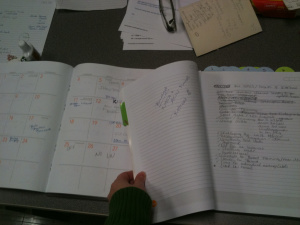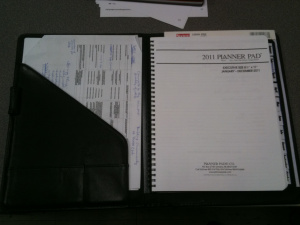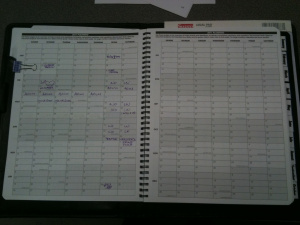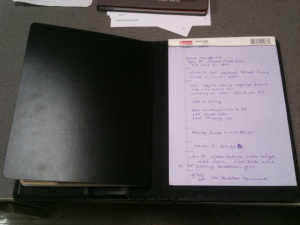Originally posted by me on the Student Affairs Women Talk Tech blog site.

“Now Woody, he’s been my pal for as long as I can remember. He’s brave, like a cowboy should be. And kind, and smart. But the thing that makes Woody special, is he’ll never give up on you… ever. He’ll be there for you, no matter what.”
This part of “Toy Story 3″ never ceases to to get me every time I watch this film. (I have to watch it a lot, my two year old daughter is addicted to it). You know how much Woody loves Andy. You’ve seen all that he’s done to be a leader for the other toys, how he’s been a role model with what it means to have an owner etc. Knowing all that, to have Andy who has ignore all the toys for so many years take the time to say something special about each one of them and say, “They mean a lot to me” and then to acknowledge that Woody would never give up on him – it pulls on your heart strings. You feel it because receiving praise or recognition from your boss, your students, or family members – those moments can be few and far between. It happens. Students will on occasion let you know that something you’ve said or done has had an affect on them in some meaningful way. Those are the best days EVER.
A quick one I remember is that I spent some time in my Leadership Class talking about how to be an LGBTQ Ally. A student took the time to find my office later and tell me how much it meant to them. Yes! *High Five to myself*
But I also believe that we should all “Do unto others as you would have done unto you.” You can’t expect students to give you that kind of recognition if it’s not the culture of the organization. Praise and recognition go a long way and I think now in the beginning of this semester its time to start thinking about how you can implement a plan to show your students, co-workers, family members how much you appreciate them.
I have put together some resources on-line to be used for just that purpose. We are some tech-y folks obviously and it’s even easier to do when it’s instant, online and available on our smartphones.
Let’s start with ePraise. From Baudville.com:
ePraise ecards are an easy, fun way to incorporate daily recognition into your workplace. The ecards are available in many of our popular recognition themes so you can easily coordinate with other gifts. To top it off, ePraise ecards are always free, so send and enjoy!

Many different cards to choose from and they have Thank You type cards, but blank and Birthday cards too.
Next is the CARTOLINA iPHONE APP:
Our Original app allows you to send brief but beautiful messages to your friends!
Choose from a selection of gorgeous, everyday designs, customize your message and email or text to all your favourite people!

Now, browsing through other websites I have compiled a list of other ways in which to reward/recognize your employees specifically:
1. Offer to pay for them to attend a professional development webinar that maybe they would not have attended due to money constraints.
2. Nominate them for campus awards AND association awards.
3. I loved Cindy Kane’s (@cindykane) tweet:
My newer and more immediate way of showing thanks… writing LinkedIn recommendations. Don’t know why I haven’t thought of this before 
4. Group Facebook messages. Praise sent out to the whole group praising one person or a team.
This is a list of ways (via tech) you can offer up some love to those that excel around you. Know of another resource that should be on this list? Tell us about it in the comments!
Good luck and I APPRECIATE you reading this post.
Like this:
Like Loading...



 This planner comes with a grey jacket and inside you have a monthly calendar on one side and a notebook on the other. I added my own tabs and etc. to make it work for me. I can keep an eye on the calendar to know which weekend of events we are talking about (we have events EVERY weekend on Fridays and Saturdays), and then take notes about each weekend via the notebook. (I have the notebook sectioned off into the number of weekends in the semester). If we are brainstorming – great. I use a page for brainstorming in the section for that weekend. As the events start to take shape, I can use the next page in the notebook to make those changes. So it’s not just a tablet of paper in a portfolio. I have had this notebook/calendar combo for the last two academic years.
This planner comes with a grey jacket and inside you have a monthly calendar on one side and a notebook on the other. I added my own tabs and etc. to make it work for me. I can keep an eye on the calendar to know which weekend of events we are talking about (we have events EVERY weekend on Fridays and Saturdays), and then take notes about each weekend via the notebook. (I have the notebook sectioned off into the number of weekends in the semester). If we are brainstorming – great. I use a page for brainstorming in the section for that weekend. As the events start to take shape, I can use the next page in the notebook to make those changes. So it’s not just a tablet of paper in a portfolio. I have had this notebook/calendar combo for the last two academic years.




